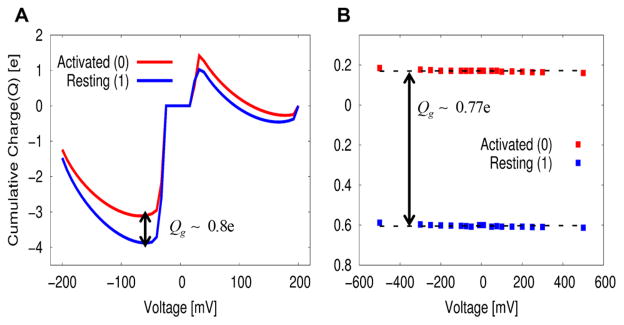Figure 4.
Comparison of the gating charge between (A) our nonequilibrium direct approach of eq 63 and (B) the indirect approach of eq 51 whose expression is analogous to the mean field macroscopic continuum expression (see eqs 46 and 48). (A) Changes in electrolyte distributions between the resting (1) and the activated state (0) yields a gating charge of ~0.85e. (B) Linear least-square fit of state dependent gating charge for each resting and activated state gives approximately zero slope, yielding a gating charge of ~0.77e, where the linear component of capacitance charge (CL,EqV) for both states was automatically subtracted (see eq 12), unlikely the electrophysiological measurement of gating charge in ref 37, where a subtraction of linear component of capacitance charge is require eq 9. This indirect approach seems to underestimate the observed gating charge of ~1e and smaller than those gating charges (that range from 0.80e to 1.2e) estimated from several different approaches in section V and VI.

